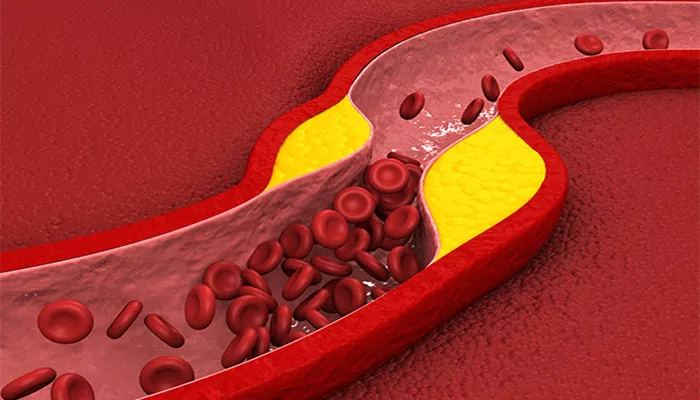Hyperlipidemia, a condition characterized by elevated levels of lipids in the blood, plays a crucial role in the development of cardiovascular diseases such as atherosclerosis, heart attack, and stroke. Understanding the classification of hyperlipidemia is essential for accurate diagnosis, effective management, and targeted treatment. This article provides a comprehensive overview of the classification systems used to categorize hyperlipidemia, emphasizing its importance in clinical practice.
Understanding Hyperlipidemia
Hyperlipidemia refers to abnormally high levels of lipids (fats) in the blood. These lipids include cholesterol and triglycerides. The condition can lead to the accumulation of fatty deposits in the arteries, increasing the risk of cardiovascular diseases. To effectively manage and treat hyperlipidemia, it is crucial to understand its various classifications.
Types of Lipids And Their Roles
To classify hyperlipidemia, it is important first to understand the types of lipids involved:
Cholesterol: A waxy, fat-like substance found in all cells of the body. It is essential for producing hormones, vitamin D, and bile acids that help digest fat. Cholesterol travels through the bloodstream in two main forms:
Low-Density Lipoprotein (LDL) Cholesterol: Often referred to as “bad” cholesterol, high levels of LDL cholesterol can lead to plaque buildup in the arteries.
High-Density Lipoprotein (HDL) Cholesterol: Known as “good” cholesterol, HDL helps remove LDL cholesterol from the bloodstream.
Triglycerides: A type of fat found in the blood, triglycerides are used by the body for energy. Elevated triglyceride levels can also contribute to arterial plaque formation.
SEE ALSO: How to Get Rid of Hyperlipidemia?
Classification Based on Lipid Profile
The classification of hyperlipidemia often begins with analyzing the lipid profile of a patient. This profile typically includes measurements of total cholesterol, LDL cholesterol, HDL cholesterol, and triglycerides. Based on these measurements, hyperlipidemia can be categorized into several types:
1. Primary Hyperlipidemia
Primary hyperlipidemia, also known as familial hyperlipidemia, is caused by genetic factors. It is often classified into different types based on the specific lipid abnormalities and their genetic causes:
Type I Hyperlipidemia (Familial Chylomicronemia Syndrome):
Characterized by elevated levels of chylomicrons (lipoproteins responsible for transporting dietary lipids) and triglycerides.
It is often due to deficiencies in lipoprotein lipase or other related enzymes.
Type II Hyperlipidemia: Further divided into two subtypes:
Type IIa (Familial Hypercholesterolemia): Marked by elevated LDL cholesterol levels and normal triglyceride levels. It is caused by genetic mutations affecting LDL receptor function.
Type IIb (Familial Combined Hyperlipidemia): Characterized by elevated levels of both LDL cholesterol and triglycerides. This type is associated with multiple genetic and environmental factors.
Type III Hyperlipidemia (Dysbetalipoproteinemia): Involves elevated levels of intermediate-density lipoproteins (IDL) and is often due to genetic defects in apolipoprotein E.
Type IV Hyperlipidemia (Familial Hypertriglyceridemia): Characterized by elevated triglyceride levels, often with normal or slightly elevated LDL cholesterol levels. It can result from genetic mutations affecting triglyceride metabolism.
Type V Hyperlipidemia (Mixed Hyperlipidemia): Involves elevated levels of both chylomicrons and triglycerides, and can be due to a combination of genetic and environmental factors.
2. Secondary Hyperlipidemia
Secondary hyperlipidemia results from other conditions or lifestyle factors that lead to abnormal lipid levels. Common causes include:
Diabetes Mellitus: Elevated blood glucose levels can lead to increased triglyceride levels and decreased HDL cholesterol.
Hypothyroidism: Low thyroid hormone levels can result in elevated cholesterol and triglyceride levels.
Chronic Kidney Disease: Kidney dysfunction can lead to dyslipidemia characterized by elevated triglycerides and cholesterol.
Alcoholism: Excessive alcohol intake can increase triglyceride levels.
Medications: Certain medications, such as corticosteroids and beta-blockers, can affect lipid levels.
Diagnostic Criteria And Tools
Accurate classification of hyperlipidemia involves various diagnostic tools and criteria:
1. Lipid Profile Testing
A lipid profile is a blood test that measures cholesterol and triglyceride levels. The results help classify hyperlipidemia based on the levels of LDL, HDL, total cholesterol, and triglycerides.
2. Genetic Testing
For primary hyperlipidemias, especially familial types, genetic testing can identify specific mutations associated with the condition. This testing helps confirm the diagnosis and guide treatment.
3. Clinical Assessment
A thorough clinical assessment, including a patient’s medical history, family history, and lifestyle factors, is essential for diagnosing and classifying hyperlipidemia.
Treatment And Management
The management of hyperlipidemia depends on its classification:
Primary Hyperlipidemia: Treatment often includes lifestyle modifications (diet, exercise) and medications such as statins, fibrates, or niacin. Genetic counseling and treatment for underlying genetic conditions may also be necessary.
Secondary Hyperlipidemia: Addressing the underlying condition (e.g., managing diabetes or hypothyroidism) and making lifestyle changes are crucial. Medications may be prescribed to manage lipid levels.
Conclusion
The classification of hyperlipidemia is a complex process that involves understanding the different types of lipids, analyzing lipid profiles, and identifying underlying causes. Accurate classification is vital for effective treatment and management, helping to reduce the risk of cardiovascular diseases. By using comprehensive diagnostic tools and considering both primary and secondary causes, healthcare providers can develop personalized treatment plans to address hyperlipidemia and improve patient outcomes.


